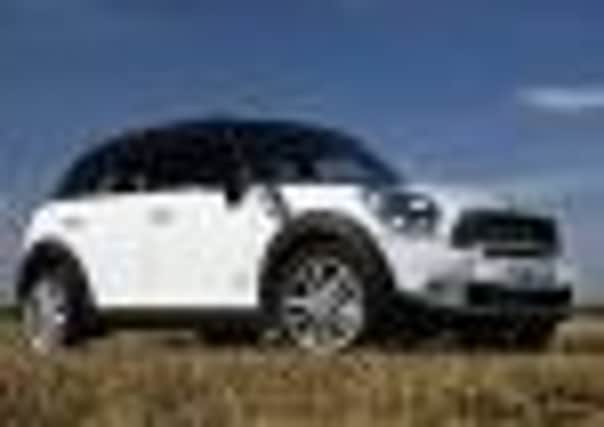Off-roading Mini


Rally-ace Paddy Hopkirk won the 1964 Monte Carlo Rally in a Mini Cooper S.
It was a phenomenal achievement in a two-wheel drive car and established the Mini as a genuine racer despite its diminutive proportions.
Advertisement
Hide AdAdvertisement
Hide AdHe won other competitions in a Mini. But could he have achieved more if he’d had a modern four-wheel drive set up.
There have been many iterations of designer Alec Issigonis’ (later Sir Alec) iconic road car, including a two-engined four-wheel drive version which was never put into production.
But now there is a production version of the Mini that comes with four-wheel drive, and in the hands of modern rally-ace Kris Meeke it is pretty damn quick.
That said, it is up against some very different competition nowadays from the cars Mr Hopkirk beat.
Advertisement
Hide AdAlthough there is the World Rally car, it is on the road that the Mini Countryman – a name which also has historic connotations for fans of the Mini – must prove its mettle.
Advertisement
Hide AdIt has to compete in the trendy crossover market which accommodates the likes of Skoda’s Yeti and the Nissan Juke, among many others. In fact, this is a sector of the market which has gone ballistic of late.
I’ve driven the Yeti and the Juke so I can judge how good the Countryman is against them.
In the looks department the new Countryman is a far cry from its much older namesake sibling, which was essentially a timber-framed extension on the standard Mini, and looks good on my drive.
Advertisement
Hide AdBut don’t let the name fool you – not every model bearing the badge will have four-wheel drive... in fact, it’s an option. Most will be front-wheel drive only. And those with four-wheel drive are fitted with a system which means front-wheel drive most of the time with power diverted to the rear wheels only when the front wheels start to lose grip. So it’s no mud-plugger.
Being an estate will add a degree of practicality for people wanting a Mini with more space,
Advertisement
Hide AdWe all know Mini’s are renowned handling machines, and with the suspension geometry gleaned from that of the standard car, then it’s happy days.
The Countryman has a high waistline and the rear ‘hatch’ gives access to a boot capable of accommodating over 350 litres of space. You can opt internally for the four-seat conventional layout with a cute centre rail running down the middle or the five-seat layout with a three-seat bench that can fold down, raising the boot capacity to an awesome 1100+ litres.
Advertisement
Hide AdThere are many trim levels applicable to the Countryman range – I counted nearly 40 combinations of specification and engine choices, from the 1.6 One 2WD at £16,340, up to the mighty Cooper S ALL4 4WD version at £27,000.
It may seem expensive, so if you plump for something in the middle, say the 1.6D Cooper ALL4 version at £20,000 you’ll be pleased, I’m sure.
Standard equipment in the Countryman is generous, extending to air conditioning, CD stereo, the usual neat switches and dials in chrome, plus the novel centre rail storage system. Don’t look at the options list as it may ruin your wallet, I didn’t but I’m sure you can have a myriad gadgets and performance enhancements to individualise your car.
So Mini has branched out with considerable success.
Advertisement
Hide AdThe brand has been a revelation for BMW and adding to that success is key for the future.
Advertisement
Hide AdI must admit, one or two did look at it and say it had lost the plot as it didn’t look like the cute car we’ve all come to see and love; more a bigger, somewhat naff-looking thing.
But folks, it really is a Mini and, I’m pleased to say, it uses all the tried and trusted ‘bits’ found in all other Mini products. This one however is the one that shouldn’t get stuck in the snow.
What’s more, the Mini is British-made.